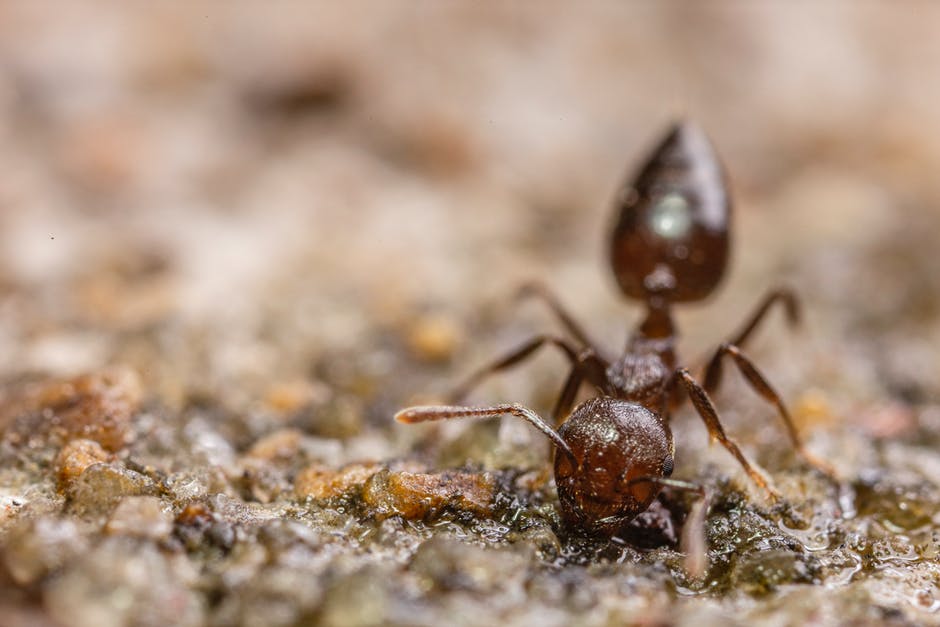Your Cart is Empty

Did you know that there are over 12,000 species of ants? They're found almost everywhere on the planet, including your home. No, not an ant infestation; we're talking about ant farms!
Have you ever considered setting up an ant enclosure so you can observe these fascinating little creatures? It's easier than you think!
We're here to talk all about how to set up your first ant enclosure and get it ready for your new six-legged tenants. Read on to learn more.
If you're reading this, you're already on the right track! The first "do" when you're trying to set up an ant farm is to do some research. While ants are easier to keep than many other insects and pets, they still require special care, and it's easy to accidentally create a poor-quality enclosure for them.
You want to research different types of ants, the types of food you need for them, how to establish a new colony and more. Ants are surprisingly delicate creatures when they're in an enclosure, and one wrong move can result in an unsuccessful ant farm setup.
Spend a few days, at least, getting as much information as possible before you even consider buying (or finding) ants. You'll save yourself a lot of trouble.
If you're a first-time ant farm owner, you should avoid using household containers for your farm. Experienced ant farm owners can use things like glass jars and other similar containers, but for a first-timer, this may be too complicated.
If you genuinely want your pet ants to thrive, stick with store-bought enclosures for now. Once you get the hang of owning an ant farm, you may be able to experiment and "DIY" some of your enclosures.
When you're setting up your first ant enclosure, resist the urge to buy cheap and mass-produced ant farms at first. Yes, they're cute, but they're not always best for the longevity of the ants. They're also often harder to maintain and customize.
Buy your ant farm components and supplies from a vendor who genuinely understands what it means to keep ants. They're also more likely to be able to answer any questions if you run into roadblocks with their products.
When you're first introducing ants to your ant enclosure, try not to handle them directly. In other words, don't hold them in your hands.
There are several reasons for this.
First, it will stress the ants out. Moving them is already a stressful process, so it's best to minimize that stress if at all possible. If the ants are biting ants, that stress could lead them to bite you.
You may accidentally hurt (or even kill) an ant when you're moving it by hand. Ants are strong and durable, but they're also small and easy to harm.
It's also far easier to move more ants at once when you're using something to transport them. Even a popsicle stick is a good option in a pinch.
Where are you going to set your new ant enclosure?
Your ant farm should sit on a flat and stable surface. It should also be away from direct light. In other words, a sunny windowsill is not an appropriate place for an ant farm.
You should also ensure that it's not at a high risk of being knocked down. If you have pets or small children in the house, keep the ant farm out of reach. Avoid putting it too close to the edge of a surface as well, even if you're careful.
You don't want to have to deal with a broken ant farm! That could lead to a serious mess.
When you're trying to decide what types of ants you want in your ant farm, know that you're going to have to choose ants from one specific species and ideally, one colony.
Ants don't cohabitate well with unfamiliar ants. Different species of ants will eat each other, and even ants from the same species, but from different colonies will not get along in many cases.
Choose ants from one colony to create a peaceful living environment. Also, if you're not experienced with taking care of ants, avoid choosing ants that bite.
While we already mentioned that you want to avoid setting the ant enclosure in direct sunlight, this isn't because of the heat. As a matter of fact, ants prefer a warmer environment.
If you don't live somewhere consistently warm, you want to heat the ant farm up somehow so it maintains a temperature of 68 to 82 °F.
Many pet supply stores have heat mats and heat cables for this. You should also keep a thermometer on your ant enclosure to make sure it's staying within a good range.
Now that you know all about how to set up an ant enclosure, it's time to get to work! Start brainstorming some ant farm ideas, buy your supplies, and introduce your new pet ants into their new neighborhood.
Taking care of ants can be tricky, but watching them is a lot of fun. Before you know it, you'll want to expand your ant farm.
If you're looking for high-quality supplies for your ant enclosure, look no further! Check out our shop at Everything Ants to get started on your ant-keeping journey.